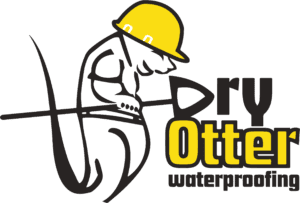Installing a crawl space drain is a proactive step to protect your home from moisture damage. They are designed to channel water away from your foundation, keeping your home and crawl space dry and free from mold, mildew, and other harmful bacteria.
This article will cover the benefits of crawl space drainage and when you need it most.
What is a Crawl Space Drain?
A crawl space drain is composed of a system of pipes or channels designed to collect and remove excess water from your crawl space. The goal is to prevent moisture buildup that can lead to mold, rot, and structural damage.
Perimeter drains: These are installed around the perimeter of your crawl space, usually at the foot of the foundation, to collect water that seeps through the soil and direct it away from the foundation.
French drains: A French drain is a perforated pipe surrounded by gravel or crushed stone buried below the crawl space floor to collect water that seeps in through the soil.
Sump pumps are used in areas with high groundwater levels. A sump pit, or hole, is dug in the crawl space floor, and when water accumulates in the pit, the pump activates and pumps it out of the crawl space.
Mat drains: A type of perimeter drain that uses a porous geotextile fabric to collect water. It is laid around the perimeter of the crawl space and covered with gravel or crushed stone. When water seeps into the fabric, it is collected in the gravel and then directed to a drain pipe.
Interior drains: If you have multiple sources of water infiltration, interior drains are installed at different points within the space to collect water from different areas.
One of the most popular systems is a crawl space French drain. As described above, the French drain is a perforated pipe bedded in gravel or crushed stone. It is installed below the crawl space floor to collect water seepage from the soil. The gravel/stone allows water to enter the pipe, carrying it away from your crawl space.
Benefits of Installing a Crawl Space Drain
- Prevent moisture and mold: Mold and mildew growth can pose serious health consequences. By installing crawl space drainage, you are keeping moisture levels down, thus preventing moisture damage and harmful mold growth.
- Structural integrity: Channeling water away from your crawl space reduces moisture and pooling water, preventing wood rot and foundation damage.
- Indoor air quality: A healthy environment in your home depends on preventing mold spores from growing that can enter your home and affect your air space.
Reasons to Install a Crawl Space French Drain
Signs you need a drain: There are visible signs that you need crawl space drainage. The main ones are:
- Standing water/wet crawl space
- Wet crawl space insulation
- Wood damage
- Damaged piers
- Mold on your floor joists
- Musty smell
- High humidity
- Efflorescence: White residue
- Poor indoor air quality
When to choose a French drain: Installing a French drain in a crawl space is often the most effective solution for moisture issues when you have these conditions:
- High groundwater levels
- Permeable soil: French drains work well in this soil type, allowing water to seep through the ground easily.
- Moderate to high moisture levels: French drains are ideal for dealing with moderate to high moisture levels in your crawl space.
- Long-term solution: French drains are a long-term solution because they are durable and require little maintenance once they are installed.
Longevity and efficiency: A French drain installed correctly is a long-term solution because it is long-lasting and requires little maintenance. Eliminating potential water damage saves on costly repairs later.
Professional Installation vs. DIY
Limitations of DIY: While installing crawl space drainage yourself is tempting, it might not be the best idea for many reasons.
- Hidden issues: Crawl spaces may hide problems like structural issues, plumbing leaks, and soil erosion.
- Incorrect installation: This can make your problems worse.
- Permits and regulations: Compliance with local regulations is a must.
- Safety concerns: This work can be hazardous and requires specific equipment.
- Long-term costs: DIY doesn’t always save you money over time.
The importance of professional help: DIY is tempting but often risky. By hiring a professional, they have the equipment, expertise, and experience to install a system that works correctly, saving you money in the long run.
Crawl space drainage is the best way to ensure a healthy home free from harmful mold growth, standing water, and structural damage.
Dry Otter Waterproofing has the experience you can count on to handle all your crawl space drainage issues. We are Charlotte’s top-rated waterproofing, mold remediation, and foundation repair company.
Schedule a free inspection today!






